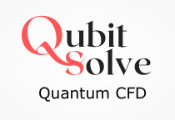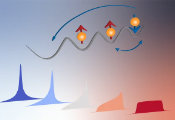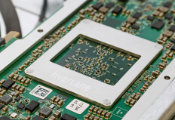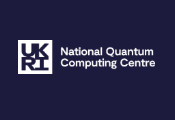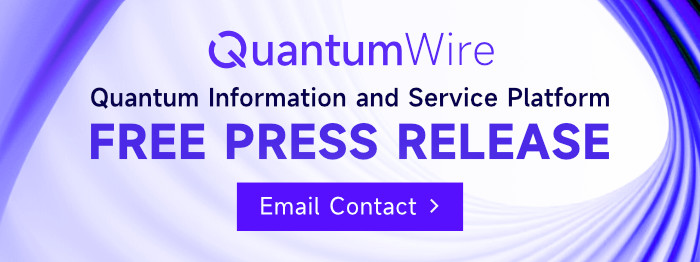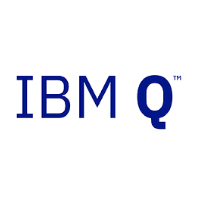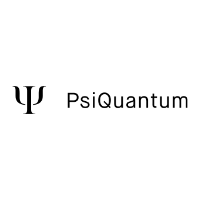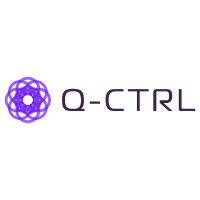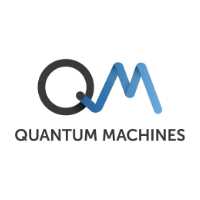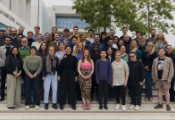Why Your Enterprise Needs to Invest in Quantum Networking Now
October 29, 2025 -- Quantum technology, once theoretical, now represents a strategic sea change for organizations.
This transformation is reflected in the quantum technology market which is expected to show significant growth, with forecasts ranging from $7.6 billion by 2027 to $100 billion by 2040.
Such a surge is driven by heavy investment from startups to established enterprises. In 2024, quantum computing firms alone secured $1.6 billion in venture funding. For executives wanting to future-proof their strategies, the potential impact of quantum capabilities needs to be top of mind.
What is quantum networking?
Quantum networking is the infrastructure that allows quantum devices to work together. A functional quantum networking can exceed the limits of a single quantum processor.
While the classical internet relies on bits (0s and 1s), the quantum network uses the principles of quantum physics. You can think of the classical internet as a postal service delivering packages between addresses. Quantum networking is more like linking two special mailboxes together through a special connection. When you send a package through this link, the state of the package can be transferred from one mailbox to another using quantum properties. In addition, any attempt to tamper with the connection is detected immediately.
Similar to how advancements in cloud computing and artificial intelligence (AI) disrupted the technology landscape, quantum networking will create another seismic shift—one that could likely eclipse its predecessors given the exponential growth in computing power and potential.
Why does quantum networking matter to enterprises now?
You may think that a quantum future is much further away than it really is. In fact, leading corporations, governments, and research institutions are building the quantum ecosystem now—including Cisco.
In the past year, the Cisco Research team has developed a unified quantum networking stack and prototypes for a quantum data center future like the Quantum Network Entanglement Chip and a Network-Aware Quantum Compiler, as well as quantum-enhanced security and data coordination applications that deliver solutions to classical computing problems of today.
In addition, global governments and other enterprises are making significant strides in the quantum space. IBM, Google, and IonQ have established roadmaps targeting error-corrected, large-scale systems of up to a million qubits by 2029-2033. When those machines are connected through a quantum network, the levels of computational power and coordination will be untouchable to today’s current standards.
In the future, it’s imagined that organizations will have their own quantum computers that employees will connect to, just like how they connect to today’s cloud-based enterprise software platforms.
While the timeline for this fully functional “quantum internet” is long, its principles already provide advantages for classical systems today, such as secure fiber-optic communications networks. That’s why these early moves matter.
Strategic advantages and applications of quantum computing
With quantum networking, quantum systems can interact together effortlessly. This connective tissue enables machines to work on bigger problems, improve sensing and measurement, and create ways to solve challenges beyond the reach of a classical computer.
Achieving these goals will require us to overcome the current limitations of a single quantum processor, which are often limited in scale, dubbing them insufficient to tackle many real-world issues.
However, through networking processors, organizations can create Quantum Data Centers (QDCs). QDCs act as large, scalable engines where complex algorithms run across many networked machines.
To make this possible, QDCs need to have the right tools in place. Researchers, academics, and engineers are building network-aware quantum compilers, like the currently-available demo from Outshift and Cisco Research, to intelligently distribute quantum algorithms across networked processors. The compilers support distributed quantum error correction, which is crucial for ensuring complex quantum calculations are reliable and accurate.
Quantum networking as an additional layer of security in the post-quantum world
Aside from faster computation, quantum computing changes the rules for cybersecurity.
Existing communication systems rely on encryption using numbers. For instance, RSA encryption uses prime numbers with hundreds of digits. In contrast, quantum computers can run calculations faster than classical machines. They can break complex numerical encryption in no time. This vulnerability leaves our existing communication systems at risk.
While post-quantum cryptography (PQC) standards are being developed to be quantum-resistant, they’re not the full answer. PQC can’t provide real-time detection, so it can’t signal if an adversary is actively attempting to intercept communications.
This is where quantum networking adds an additional layer of defense. Tools like Quantum Key Distribution can generate encryption keys that can’t be copied. Any attempt to alter the quantum state would alert users.
Cisco’s Quantum Alert prototype takes this even further. It detects eavesdropping in real time by capitalizing on the inherent sensitivity of entangled quantum systems.
For background, when entangled photons are transmitted through a quantum network, any interaction or attempt to intercept the communications instantly changes their quantum properties. With this tool, any change to the entangled photons triggers an alarm. That makes the channel tamper-proof, so an attacker can’t monitor it without being noticed.
For an organization’s sensitive data, encryption is just the starting point. They need to be certain that their communications aren’t under silent surveillance. Quantum networking can help close that gap.
Preparing your enterprise for the quantum era
The path to ensure your enterprise is ready for quantum capabilities involves a dual strategy: scaling up power and scaling out through networking.
Scaling up: Increasing the power of quantum machines
Just like the race to acquire as many GPUs as possible to fuel advancements in AI, organizations will race to acquire more quantum computing power.
Progress will come by increasing qubit count so machines can handle more complex algorithms, improving qubit fidelity for precise and stable calculations, and implementing Quantum Error Correction (QEC) to achieve fault-tolerant, logical qubits that can withstand the noise and instability of current systems.
Achieving scale within your organization involves a dual focus of strategic acquisition and internal alignment. Start engaging with hardware innovators to understand their qubit roadmaps and map those timelines against your own computational needs so you can invest at the right moment.
In addition, hold conversations with your teams to figure out where high-fidelity, high-qubit machines could directly solve your industry’s most challenging computational problems. From modeling risk in financial portfolios to accelerating new prescription drug designs, the use cases are enormous.
Scaling out: Building the quantum network
It’s not enough for an organization to have a single quantum machine. Organizations need to connect many smaller processors into a larger, distributed quantum computer to have a coherent system to realize the full benefits of quantum computing.
In the classical world, data centers do something similar, linking racks of servers to work in unison. In the quantum world, the connections go beyond sharing workloads. Scaling out begins with modular quantum architectures. Multiple processors, each with their own strengths, are wired together through quantum links. The network passes messages and distributes quantum states themselves. It makes an entirely new kind of computation possible.
Then, a Network-Aware Quantum Compiler decides how to split a problem into parts, sending each to the machine best suited to solve it, while coordinating error correction across the system, so the overall result is accurate and reliable. The result is turning separate machines into a single, vastly more powerful engine.
Cisco Research has been prototyping the hardware and software to make this possible. Quantum entanglement chips, built to operate at telecom wavelengths, can generate over a million entangled pairs every second while consuming less than a milliwatt of power. These chips when paired with distributed compilers form the backbone of modular quantum computing.
Organizations need to think beyond their own data center. They need to plan a quantum system that extends across sites. Organizations that are truly quantum ready will understand the significance of how to connect their internal quantum assets with trusted partners to create a secure, high-speed corridor for computations.
Additionally, quantum computing doesn’t mean the end of classical computing. Businesses will use classical and quantum services together. For this reason, it’s important for these systems to be interoperable. This interoperability gives network-dependent applications, from distributed AI model training to secure collaborative research, the opportunity to come to life. It can’t be done by a single machine, no matter how powerful it is.
Quantum networking FAQ
Q: How soon will quantum networking impact my industry?
A: Quantum networking is already delivering immediate value to classical systems through applications like eavesdropper detection and improved decision coordination. These offer tangible business benefits today. For large-scale distributed quantum computing to solve highly complex problems, the timeline is longer, but the foundational software and hardware being developed now are accelerating that future.
Q: What strategic investments in quantum networks should I consider making today?
A: Focus on strategic intelligence, risk assessment, and exploring practical prototypes. Engaging with leading quantum labs for design partnerships, experimenting with Network-Aware Quantum Compilers for future distributed quantum computing planning, and understanding the immediate benefits of quantum-enhanced security and coordination applications are prudent first steps.
Q: How will quantum networking impact cybersecurity investments and strategies?
A: Quantum networking will fundamentally enhance cybersecurity by providing eavesdropper detection, which is physically impossible with classical networks. It complements post-quantum security efforts by adding an active layer of defense, ensuring that even if data is harvested, its interception is immediately known. This will necessitate strategic investments in quantum-enhanced detection systems alongside PQC implementation.
Q: What are the biggest risks for enterprises if they delay preparing for quantum networking?
A: Delaying preparation risks cedes competitive advantage to early adopters who leverage quantum-enhanced speed and coordination. It also exposes your enterprise to advanced cyber threats, especially "harvest now, decrypt later" attacks, as current security measures remain vulnerable to future quantum decryption capabilities. From a strategic perspective, ignoring quantum networking today is akin to having underestimated the internet in its nascent stages—a misstep with potentially severe long-term consequences.
Start preparing for a quantum future now
Some of the benefits of quantum networking such as eavesdropper detection and coordination that exceeds classical exist now. Large-scale distributed quantum computing will come later, but the groundwork is already being built. The risk of waiting is high. Early adopters will gain speed, coordination, and security advantages. Planning now can help businesses prepare for the future.

